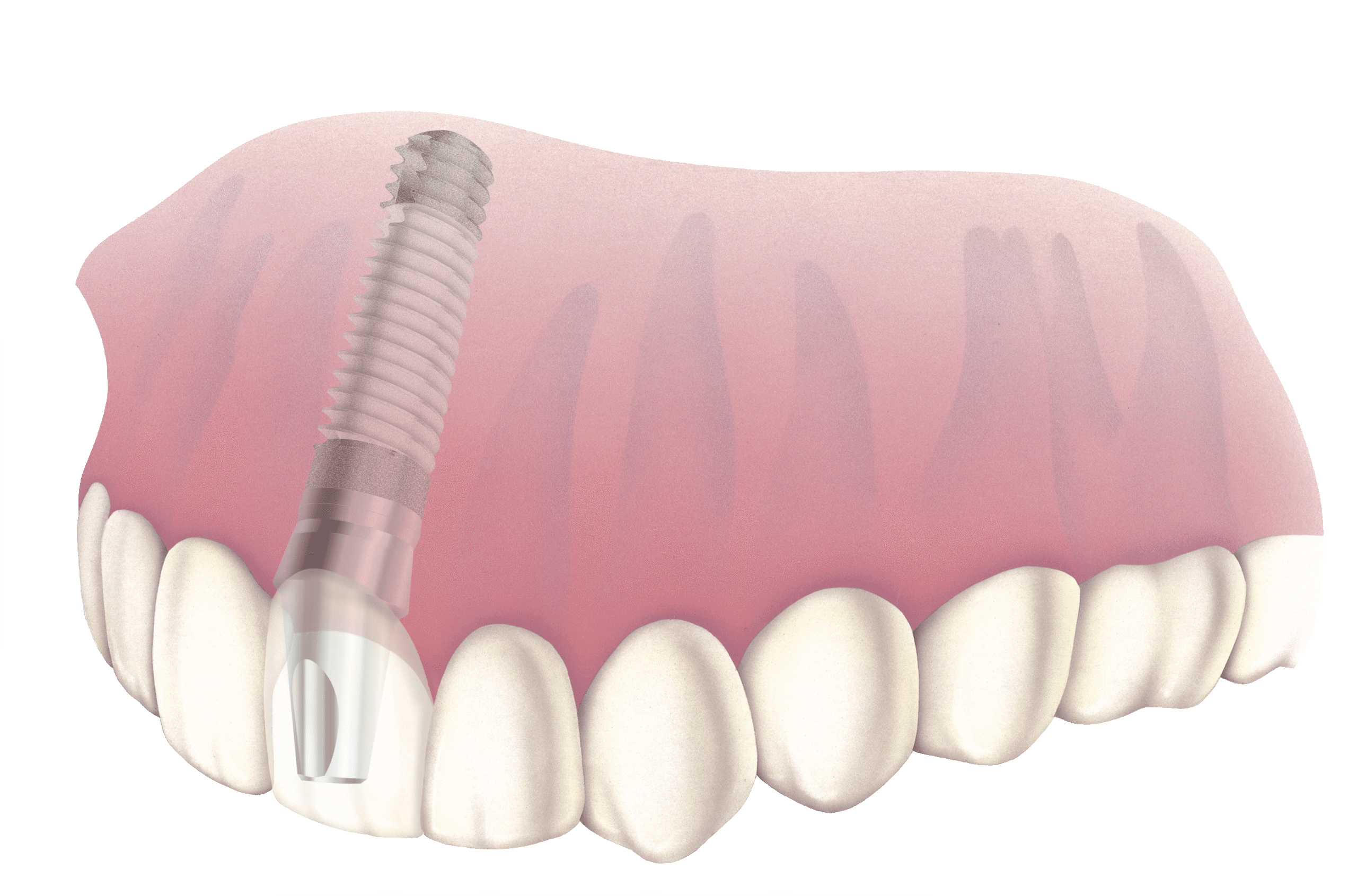Your Guide to Dental Implants Kent: Reclaim Your Dental Health
Your Guide to Dental Implants Kent: Reclaim Your Dental Health
Blog Article
Experience the most recent Technologies in Dental Implants Innovation
As the area of dentistry proceeds to advance, the advancements in oral implant innovation have actually been nothing short of amazing. From the usage of innovative products that improve toughness to the application of digital imaging for accurate placement, these developments are transforming the landscape of dental care. With minimally intrusive medical techniques and the personalization capacities of 3D printing, clients currently have actually accessibility to customized options that were once unbelievable. The integration of innovation is revolutionizing the capability of oral implants, guaranteeing boosted outcomes and person fulfillment.
Advanced Products for Enhanced Sturdiness
In the realm of dental implants technology, the assimilation of advanced products has actually considerably added to improving longevity and durability of these essential dental prosthetics. The application of products such as titanium alloys, zirconia, and ceramic substances has changed the field by using raised resistance, strength, and biocompatibility to rust.
Titanium alloys are extensively utilized in oral implants as a result of their phenomenal strength-to-weight proportion, deterioration resistance, and compatibility with the body. These alloys ensure the security and durability of the implant by enduring the forces put in throughout speaking and eating, offering a reputable solution for clients seeking durable tooth substitutes.
Zirconia, a sort of ceramic material, has gained appeal for its biocompatibility and all-natural tooth-like appearance. Its high stamina and resistance to wear make it an appropriate option for oral crowns and bridges, improving the total aesthetics and performance of the dental implant.

Digital Imaging for Accurate Placement
The evolution of oral implants technology has better progressed with the combination of electronic imaging methods, making certain exact positioning of these prosthetics for ideal practical and visual outcomes. Digital imaging plays a critical duty in the preparation and placement of dental implants by supplying comprehensive 3D images of the person's jawbone structure. This modern technology permits dental practitioners to analyze bone density, find important structures, and prepare the specific position and angle for implant positioning with unparalleled precision.
By making use of electronic imaging, dental practitioners can produce online surgical guides that work as a roadmap during the dental implant placement procedure. These guides are customized for every client, taking into consideration their unique anatomy and the wanted result. This degree of accuracy not only enhances the success price of oral implant procedures yet also minimizes the threat of complications.
Furthermore, digital imaging allows dentists to imagine the final prosthetic repair before the actual placement of implants, permitting precise preparation and guaranteeing that the result fulfills the person's aesthetic assumptions. On the whole, the integration of electronic imaging technology has revolutionized the area of dental implants, offering patients a more predictable, effective, and patient-specific treatment strategy.

Minimally Invasive Surgical Strategies


Developments in surgical methods have resulted in the growth of minimally invasive methods in the field of dental implantology. These strategies aim to lower trauma to the client, shorten healing times, and enhance general treatment outcomes. Minimally intrusive surgeries include smaller sized lacerations, specialized tools, and progressed imaging technologies to exactly put dental implants with minimal disturbance to bordering cells.
One key element of minimally intrusive techniques is using guided surgical procedure, where 3D imaging and computer-aided layout software application are employed to plan the dental implant placement with wonderful precision. This enables a more foreseeable outcome and can usually eliminate the requirement for substantial flap surgical treatment.
Additionally, developments in products and implant layout have also added to the success of minimally invasive methods. Implants with improved surface area residential properties advertise much faster osseointegration, minimizing the healing time required prior to the prosthetic repair can be placed.
3D Printing for Personalized Solutions
Making use of 3D printing innovation in dental implantology enables the creation of highly personalized solutions tailored to private person needs and physiological variants. This cutting-edge innovation makes it possible for dental specialists read the full info here to create and make dental implants with remarkable precision and precision. By utilizing electronic imaging techniques, such as cone light beam computed tomography (CBCT), thorough 3D designs of the person's oral dental caries can be created to lead the dental implant planning process.
Among the vital advantages of 3D printing in oral implantology is the capability to create patient-specific implants that flawlessly fit the one-of-a-kind anatomy of each individual. This individualized approach helps enhance the overall success and long life of the dental implant by making sure optimal fit and positioning. In addition, 3D printing enables for the manufacturing of complicated geometries and complex structures that would be challenging or difficult to achieve making use of typical manufacturing methods.
Moreover, 3D printing innovation enables dental professionals to improve the implantation process, reducing surgery time and improving total client experience. With its capability to create customized options quickly and effectively, 3D printing is reinventing the area of dental implantology, offering clients ingenious treatment choices and improved results.
Integrated Modern Technology for Improved Functionality
Applying cutting-edge modern technology in oral implantology boosts capability and accuracy, elevating the requirement of look after individuals undergoing implant procedures. Integrated modern technology plays an essential duty in boosting the general success and longevity of dental my explanation implants. One crucial advancement is the combination of digital scanning and imaging innovations, such as cone-beam calculated tomography (CBCT) and intraoral scanners. These tools allow for in-depth 3D imaging of the individual's dental frameworks, promoting precise therapy preparation and implant positioning.
Furthermore, the assimilation of computer-aided style and computer-aided production (CAD/CAM) technology makes it possible for the creation of custom-made implant reconstructions with outstanding precision. CAD/CAM systems make use of digital impressions to create prosthetics that completely fit the client's one-of-a-kind anatomy, making certain ideal comfort and capability. Furthermore, making use of robotic-assisted surgical procedure in implant placement improves accuracy and decreases the danger of human mistake.
Verdict
To conclude, the most recent innovations in dental implants innovation deal enhanced longevity through advanced products, precise placement with digital imaging, minimally invasive surgical strategies, tailored remedies with 3D printing, and improved capability with integrated modern technology - Dental implants Kent. These innovations in dental implants modern technology are revolutionizing the field and supplying people with more reliable and reliable treatment alternatives for recovering their smiles and dental wellness
The combination of innovation is reinventing the performance of oral implants, guaranteeing enhanced Homepage results and person satisfaction.
The development of oral implants technology has actually better advanced with the combination of digital imaging strategies, making sure exact positioning of these prosthetics for ideal useful and aesthetic end results. Minimally intrusive surgical treatments involve smaller cuts, specialized tools, and advanced imaging modern technologies to specifically place oral implants with minimal interruption to surrounding cells.
Applying advanced technology in dental implantology enhances capability and accuracy, elevating the requirement of treatment for patients going through dental implant treatments. Dental implants Kent. Integrated innovation plays an essential role in boosting the total success and longevity of oral implants
Report this page